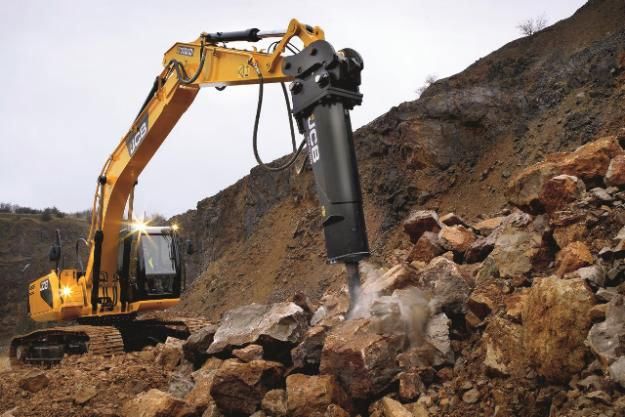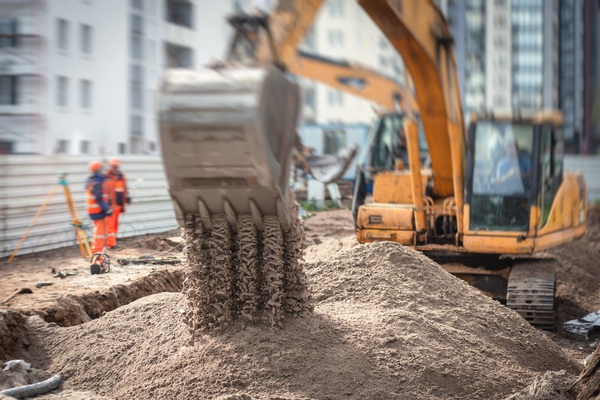Commercial Lancaster Trenching - Trenching Services for Businesses in Lancaster
Commercial Lancaster Trenching - Trenching Services for Businesses in Lancaster
Blog Article
Revealing the Art of Excavation: Pro Tips for Safe and Productive Digging
In the world of excavation, the proficiency of efficient and safe digging is an art type that requires understanding, adherence, and precision to well established methods. As soil is transformed and earth is moved, the intricacies of excavation expose themselves, requiring a keen understanding of equipment, dirt structure, safety procedures, and ecological considerations. The competence needed to browse these elements successfully can imply the difference between an effective excavation job and a prospective disaster. By deciphering the layers of this detailed process, a globe of methods and insights waits for those seeking to raise their excavation skills to new elevations.
Significance of Appropriate Tools
To make sure the safety and efficiency of any excavation job, using the ideal devices is extremely important. Excavation jobs vary in range and complexity, ranging from tiny household landscape design jobs to large construction tasks.
These flexible devices come in various dimensions to suit various job requirements. Mini excavators are excellent for smaller tasks, while bigger excavators tackle more considerable jobs efficiently.
Excavators excel in tasks that call for pressing big amounts of dirt or particles. By investing in the ideal equipment, excavation tasks can be finished securely, on time, and with precision.
Recognizing Soil Structure
A thorough understanding of soil structure is essential for executing excavation jobs with precision and security. Recognizing the various kinds of dirt is essential as it directly affects excavation approaches, tools choice, and general job effectiveness.
Sand bits are the biggest and give great drainage but supply little communication. Silt bits are smaller sized than sand however larger than clay, offering modest water drainage and communication. Clay fragments are the tiniest and supply high cohesion but inadequate water drainage. Raw material, such as rotting plant material, influences dirt fertility and stability.
Prior to beginning excavation, carrying out soil examinations to identify its composition and features is crucial. This details helps in picking the proper equipment, implementing safety steps, and developing excavation strategies customized to the particular dirt conditions - septic ohio. By understanding dirt composition, excavation experts can enhance job end results while making sure safety and adherence to finest practices
Precaution and Procedures
Comprehending dirt composition is the foundation upon which security actions and methods for excavation jobs are built, making sure the health of workers and the success of the venture. When it comes to safety and security during excavation, there are a number of vital steps that have to be implemented to alleviate threats and prevent mishaps.
Most importantly, prior to any kind of excavating starts, an extensive inspection of the site ought to be carried out to determine any type of prospective threats such as below ground energies, unpredictable dirt problems, or nearby structures that could position a risk. It is critical to have a skilled person look after the excavation process to guarantee that all safety procedures are look at this now complied with purely.
In addition, all workers associated with the excavation must be appropriately trained in risk-free excavating methods and the correct procedure of devices. Personal safety equipment (PPE) such as tough hats, high exposure clothing, gloves, and safety and security boots ought to be used in all times to reduce the threat of injuries. excavating ohio. Routine safety and security conferences and toolbox talks must also be carried out to maintain all employees informed about potential dangers and enhance secure work practices. By adhering to these precaution and procedures, excavation jobs can be finished effectively and without occurrence.
Reliable Excavation Planning
When beginning on an excavation job, thorough preparation is important to make sure effectiveness, safety, and successful results. Efficient excavation planning entails a number of key actions that are critical for the smooth implementation of the project. The initial step is to conduct a thorough website evaluation to identify any kind of prospective hazards, such as below ground utilities or unpredictable dirt conditions. This details is crucial for developing a detailed excavation strategy that consists of precaution and take the chance of mitigation methods.
Once the website assessment is complete, the next action is to create a clear timeline and timetable for the excavation tasks. This includes establishing the sequence of jobs, equipment demands, and manpower appropriation. Appropriate organizing helps stay clear of delays and ensures that the task remains on track.

Furthermore, interaction amongst all staff member is critical during the planning stage. Clear directives, routine updates, and reliable coordination are vital for an effective excavation task. By investing effort and time in precise preparation, excavation groups can dramatically improve performance, minimize risks, and attain effective end results.

Taking Care Of Ecological Considerations
With raising focus on environmental sustainability in building and construction methods, managing ecological considerations has actually ended up being a vital facet of excavation projects. Excavation tasks have the prospective to impact the surrounding atmosphere through dirt erosion, debris drainage, environment disturbance, and contamination of water resources. To alleviate these dangers, it is vital to carry out ideal practices that focus on environmental defense.

In addition, appropriate waste management is vital from this source to stop dirt and water contamination. Applying treatments for the disposal of unsafe products, recycling of waste products, and minimizing making use of harmful chemicals can significantly reduce the environmental impact of excavation tasks. By incorporating these techniques right into excavation planning and execution, building companies can ensure that their projects are not only safe and efficient but additionally environmentally responsible.
Final Thought
Finally, mastering the art of excavation calls for a thorough understanding of correct devices, soil make-up, safety and security procedures, and effective preparation. By complying with these guidelines and taking into consideration ecological elements, excavations can be performed securely and efficiently. It is crucial to focus on safety and performance in every digging task to make sure successful end results.
As soil is transformed and earth is relocated, the ins and outs of excavation reveal themselves, requiring a keen understanding of tools, soil make-up, security methods, and environmental factors to consider.To guarantee the safety and security and effectiveness of any excavation job, making use of the suitable equipment is extremely important.An extensive understanding of dirt structure is basic for executing excavation jobs with precision and security. Recognizing the different types of dirt is essential as it straight influences excavation methods, tools selection, and general task efficiency. By comprehending dirt composition, excavation specialists can enhance job end results while guaranteeing safety and security and adherence to best methods.
Report this page